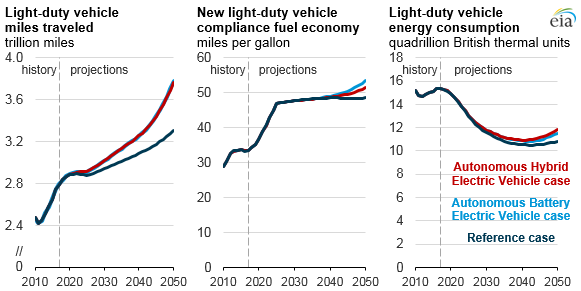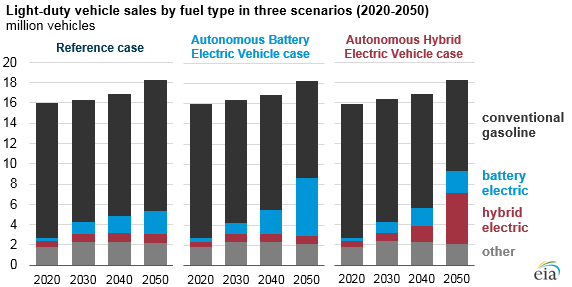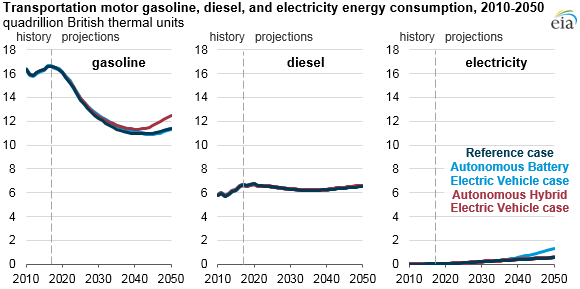Autonomous vehicles are one of the main sources of uncertainty in the future of U.S. transportation energy consumption, as autonomous vehicle technology has the potential to change travel behavior, vehicle design, energy efficiency, and vehicle ownership. Analysis in EIA’s Annual Energy Outlook 2018 (AEO2018) shows that the widespread adoption of autonomous vehicles could increase overall light-duty vehicle travel and, depending on how those vehicles are powered, lead to slightly higher transportation energy consumption.

In two AEO2018 sensitivity cases that assume more widespread use of autonomous vehicles—and that these vehicles are driven more miles per year than non-autonomous vehicles—than in the Reference case, overall light-duty vehicle travel demand increases 14% higher than Reference case levels by 2050, reaching 3.8 trillion miles in that year. One case assumes the increasing adoption of autonomous battery electric vehicles; another case assumes the increasing adoption of autonomous hybrid electric vehicles. Both cases assume that autonomous vehicles as a share of overall light-duty vehicle sales increase from 1% percent in the Reference case to 31% in the sensitivity cases in 2050.
In the AEO2018 Reference case, autonomous vehicles are powered by conventional gasoline internal combustion engines. Despite the relative fuel efficiency of battery electric and hybrid electric vehicles compared with conventional gasoline internal combustion engines, more energy is consumed in both sensitivity cases (up to 4% more) compared with Reference case levels in 2050 because of increased light-duty vehicle travel. In all three cases, however, conventional gasoline engines remain the most common technology powering light-duty vehicles.

In the sensitivity case with more hybrid electric vehicles, gasoline consumption is slightly higher than in the Reference case. In the case with more battery electric vehicles, electricity consumption is slightly higher than in the Reference case. In both cases, diesel consumption is virtually unchanged.

The full Issues in Focus article Autonomous Vehicles: Uncertainties and Energy Implications provides additional discussion of definitions of autonomous vehicles, potential benefits and obstacles, uncertainties related to energy consumption, and scenario assumptions and results.
Principal contributor: Nicholas Chase

Follow us on social media: